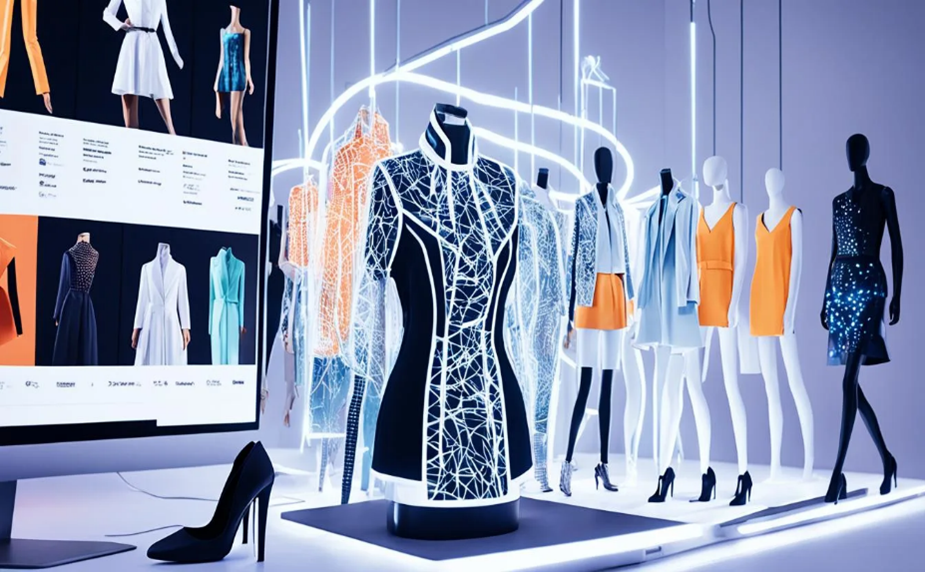AI in Fashion: How Algorithms Predict the Next Big Trends
- Shilpi Mondal

- 1 day ago
- 4 min read
SHILPI MONDAL| DATE: MAY 28 ,2025

Introduction
The fashion industry has always been a dynamic and fast-paced world where trends emerge and fade with lightning speed. Traditionally, trend forecasting relied on the intuition of fashion experts, runway shows, and cultural observations. Today, artificial intelligence (AI) is revolutionizing this process, enabling brands to predict trends with unprecedented accuracy by analyzing vast amounts of data in real time. From social media signals to runway analytics, AI is reshaping how fashion trends are identified, anticipated, and capitalized upon.
In this blog, we’ll explore how AI is transforming fashion forecasting, the key technologies behind it, and the ways brands are leveraging these insights to stay ahead of the curve.
The Evolution of Fashion Forecasting
Historically, trend forecasting was an elite domain—limited to fashion insiders who attended runway shows, analyzed cultural shifts, and relied on gut instinct. Editors at magazines like Vogue and influencers like Miranda Priestly in The Devil Wears Prada dictated what was "in" or "out".

However, the rise of social media and fast fashion has accelerated trend cycles, making manual forecasting nearly obsolete. Trends now emerge and disappear within weeks, driven by viral TikTok videos, celebrity endorsements, and influencer culture. To keep up, the industry has turned to AI—a tool capable of processing millions of data points to detect emerging patterns before they hit the mainstream.
How AI Predicts Fashion Trends
AI-powered trend forecasting relies on several key technologies and data sources:
Runway and Social Media Analysis
AI algorithms scan runway images, fashion week coverage, and social media posts to identify recurring styles, colors, and silhouettes. For example:
Heuritech analyzes over 3 million social images daily, detecting trends like "Boho Chic in Suede" or "Bright Yellow" for Spring/Summer 2025.

WGSN combines AI with human expertise to forecast macro-trends (e.g., sustainability shifts) and micro-trends (e.g., viral accessories).
Consumer Behavior & Search Data
AI tracks real-time search queries, e-commerce clicks, and shopping behavior to predict demand:
Google Trends and tools like Trendalytics identify rising keywords (e.g., "LumberJane" fleece shirts) before they peak.
Clickstream data reveals what shoppers hover over, abandon, or purchase, helping brands adjust inventory.
Sentiment Analysis & Influencer Impact
Natural language processing (NLP) evaluates customer reviews, influencer posts, and hashtags to gauge emotional responses to trends. For instance, AI detected the longevity of "cottagecore" by analyzing not just popularity but the lifestyle values it represented.
Generative AI for Rapid Prototyping
Brands like Mango and Nike use generative AI to create design variations based on trend data, reducing sampling waste. AI can suggest eco-friendly materials or optimize silhouettes predicted to trend.
Case Studies: AI in Action
Zara’s Demand Prediction:
Zara’s AI system analyzes weather, social media, and sales data to adjust inventory in real time, reducing overstock by 30%.
Stitch Fix’s Personalized Styling:
The subscription service uses AI to analyze 90+ customer data points (e.g., body type, location) to recommend trending styles, boosting repeat purchases by 56%.
Heuritech’s Viral Trend Alerts:
When TikTok popularized "LumberJane" shirts, AI tools auto-tagged relevant products, allowing brands to capitalize on the trend instantly.
Challenges and the Human Touch
While AI excels at pattern recognition, it has limitations:
Bias in Data:
Algorithms may overlook niche trends if training data lacks diversity.
Creative Interpretation:
AI can’t replace human intuition—designers still contextualize trends within cultural narratives.
As Francesca Muston (WGSN) notes, AI augments creativity: "Human teams interpret data within a social context, ensuring forecasts align with brand DNA".
The Future of AI in Fashion
By 2025, the AI fashion market is projected to hit $4.4 billion, with advancements like:

Hyper-localized Trends:
AI will predict regional preferences (e.g., Tokyo’s streetwear vs. Parisian chic).
Sustainable Forecasting:
Reducing overproduction by aligning designs with verified demand.
Virtual Try-Ons & AI Models:
Tools like Botika generate on-trend marketing imagery in hours.
Conclusion
AI is no longer a futuristic concept—it’s a necessity for fashion brands navigating today’s accelerated trend cycles. By harnessing algorithms, brands can move from reactive to predictive, minimizing waste and maximizing relevance. Yet, the most successful strategies will blend AI’s precision with human creativity, ensuring fashion remains as much an art as a science .
Citations:
Friedman, A. (2025, May 28). Fashion Moves Fast—AI fashion trend forecasting moves faster. Botika. https://botika.io/thethread/ecommerce/fashion-moves-fast--ai-fashion-trend-forecasting-moves-faster-2
The ‘Closet’ Database: Industry turns to AI algorithms for categorizing and predicting fashion. (n.d.). ScienceWriters (www.NASW.org). https://www.nasw.org/article/closet-database-industry-turns-ai-algorithms-categorizing-and-predicting-fashion
Heuritech. (2025, May 5). Fashion trend forecasting & prediction with AI - Heuritech. https://heuritech.com/
WGSN. (n.d.). Fashion design. https://www.wgsn.com/en/products/fashion
AI and Fashion Forecasting: A New Approach to Predicting Trends. (n.d.). https://www.xyzparis.xyz/blog/ai-and-fashion-forecasting-a-new-approach-to-predicting-trends
Khanna, A. (2024, August 13). Why the fashion industry can’t ignore AI: Five key trends to watch. Forbes. https://www.forbes.com/councils/forbestechcouncil/2023/11/06/why-the-fashion-industry-cant-ignore-ai-five-key-trends-to-watch/
Image Citation:
Matthews, B. (2024, June 9). Will AI replace fashion designers Exploring possibilities. Hong Kong DA. https://www.hongkongda.com/will-ai-replace-fashion-designers-exploring-possibilities/
Admin, & Admin. (2024, May 7). Artificial intelligence in fashion Forecasting and trend Analysis - Venuez.dk. Venuez.dk - Your Strategic Partner In The Sports Clothing Industry. https://www.venuez.dk/artificial-intelligence-in-fashion-forecasting-and-trend-analysis/
Fabriclore, V. (2025, April 25). How to use AI to predict fashion trends for your clothing business in the USA. Fabriclore. https://fabriclore.com/blogs/fashion-business-lifestyle-trends/how-to-use-ai-to-predict-fashion-trends-for-clothing-business-usa
Varshney, B. N. (2025, February 16). Powered by AI: The future of fashion | Apparel Resources. Apparel Resources. https://apparelresources.com/technology-news/retail-tech/powered-ai-future-fashion/





Comments